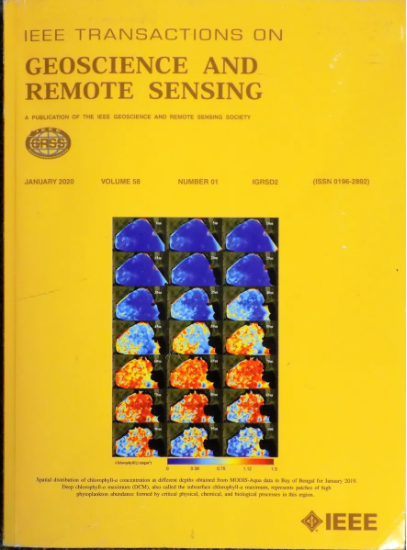基于多尺度时空信息的ENSO预测深度学习模型
IF 8.6
1区 地球科学
Q1 ENGINEERING, ELECTRICAL & ELECTRONIC
IEEE Transactions on Geoscience and Remote Sensing
Pub Date : 2025-01-13
DOI:10.1109/TGRS.2025.3529322
引用次数: 0
摘要
厄尔尼诺Niño/南方涛动(ENSO)的变率与一系列与气候有关的极端事件及其对生态系统的影响有关。因此,提供可靠和准确的长期预测的能力对于有效的政策管理将是非常宝贵的。目前的研究仅使用季节间尺度的时空信息来预测目标月份的ENSO。然而,现有方法在很大程度上忽略了年际信息。在这项研究中,我们提出了一种基于视觉转换(ViT)模型的新架构,结合季节和年际尺度的时空信息来预测目标月份Niño3.4指数。该模型进一步结合了月度感知(MA)令牌,以有效地捕捉季节变化。我们的研究结果表明,所提出的模型可以提前20个月实现准确的预测,当包括年际信息时,所有季节的提前期为6-15个月的预测技能都有显着提高。此外,注意图还提供了对驱动ENSO预测的物理连接的见解。此外,MA令牌在捕获全局时空特征方面优于单个令牌。这些发现强调了在深度学习框架内结合季节和年际信息的潜力,以推进ENSO预测并加深我们对其动态的理解。本文章由计算机程序翻译,如有差异,请以英文原文为准。
Deep Learning Model for ENSO Forecasting Using Multiple-Scale Spatiotemporal Information
The variability of the El Niño/Southern Oscillation (ENSO) is associated with a diverse range of climate-related extremes and impacts on ecosystems. As such, the ability to provide robust and accurate long-lead forecasts would be invaluable for effective policy management. Current research uses only interseasonal scale spatiotemporal information to predict the ENSO for the target month. However, the interannual information is largely ignored by existing methods. In this study, we propose a novel architecture based on a vision transformer (ViT) model to combine spatiotemporal information from both interseasonal and interannual scales for predicting the target month Niño3.4 index. The model further incorporates a monthly aware (MA) token to effectively capture seasonal variations. Our results demonstrate that the proposed model achieves accurate forecasts up to 20 months in advance, with significant improvements in prediction skill for lead times of 6–15 months across all seasons when interannual information is included. In addition, the attention maps provide insights into the physical connections driving ENSO predictions. Furthermore, the MA token outperforms a single token in capturing global spatiotemporal features. These findings highlight the potential of combining interseasonal and interannual information within deep learning frameworks to advance ENSO prediction and deepen our understanding of its dynamics.
求助全文
通过发布文献求助,成功后即可免费获取论文全文。
去求助
来源期刊

IEEE Transactions on Geoscience and Remote Sensing
工程技术-地球化学与地球物理
CiteScore
11.50
自引率
28.00%
发文量
1912
审稿时长
4.0 months
期刊介绍:
IEEE Transactions on Geoscience and Remote Sensing (TGRS) is a monthly publication that focuses on the theory, concepts, and techniques of science and engineering as applied to sensing the land, oceans, atmosphere, and space; and the processing, interpretation, and dissemination of this information.
 求助内容:
求助内容: 应助结果提醒方式:
应助结果提醒方式:


